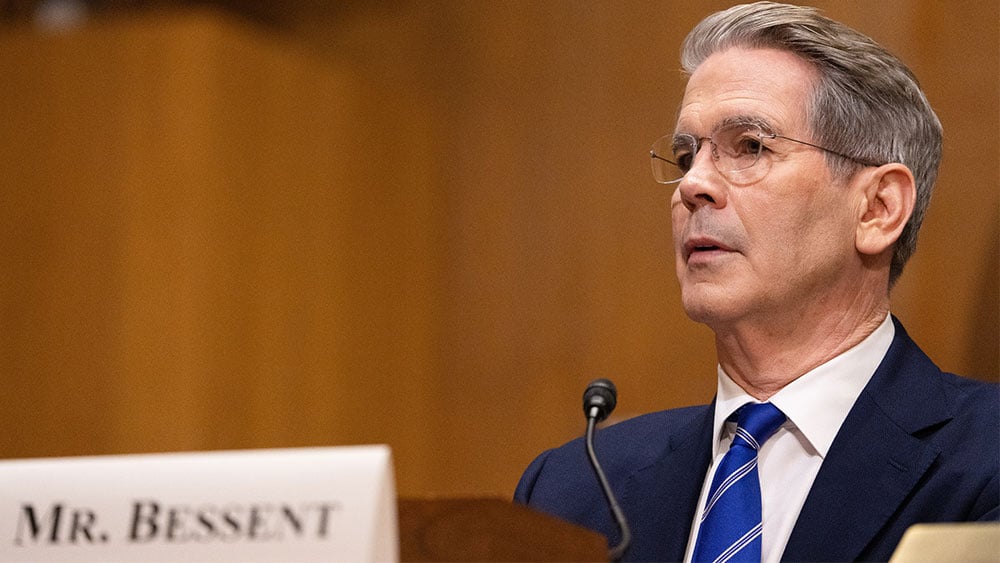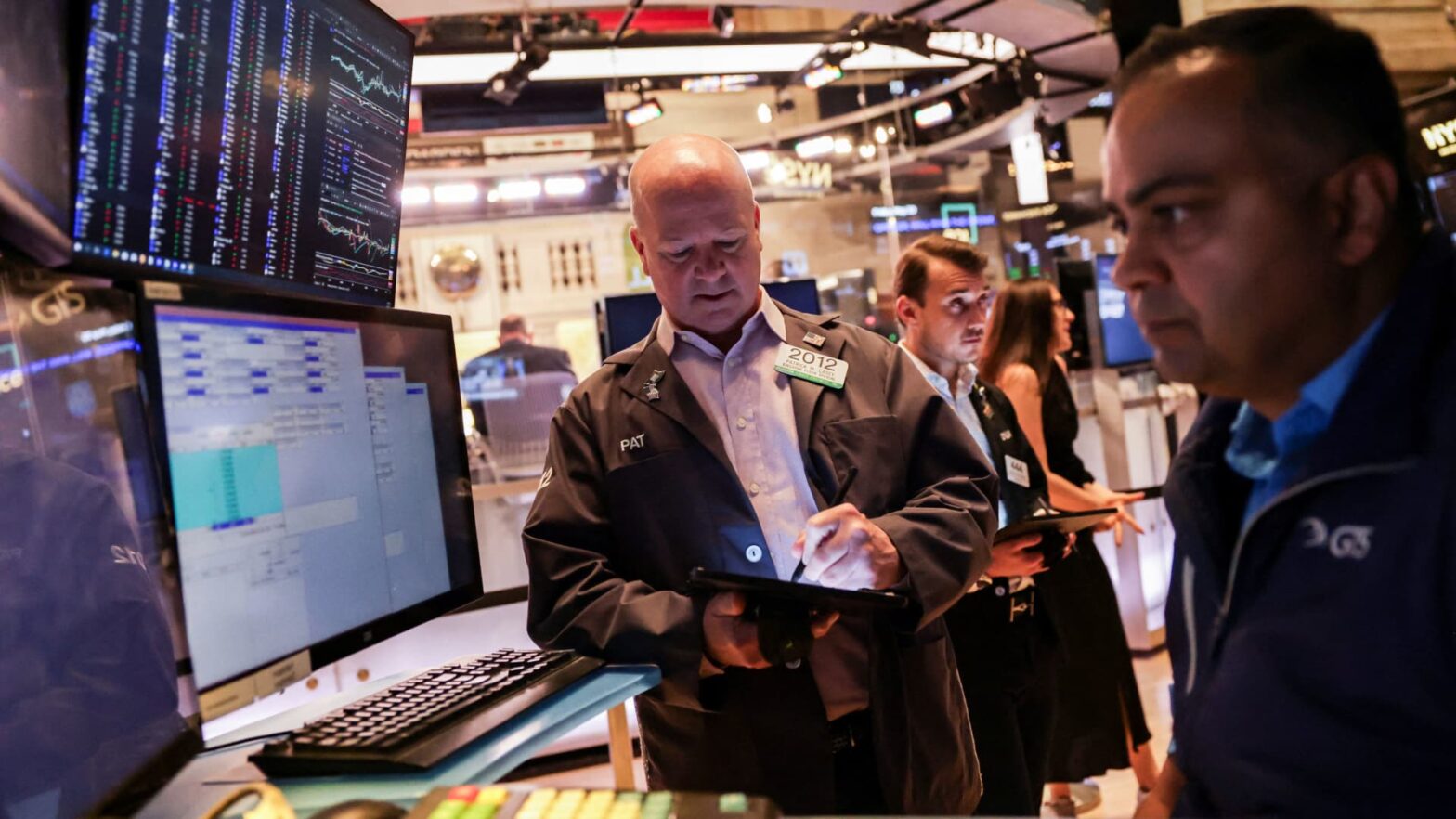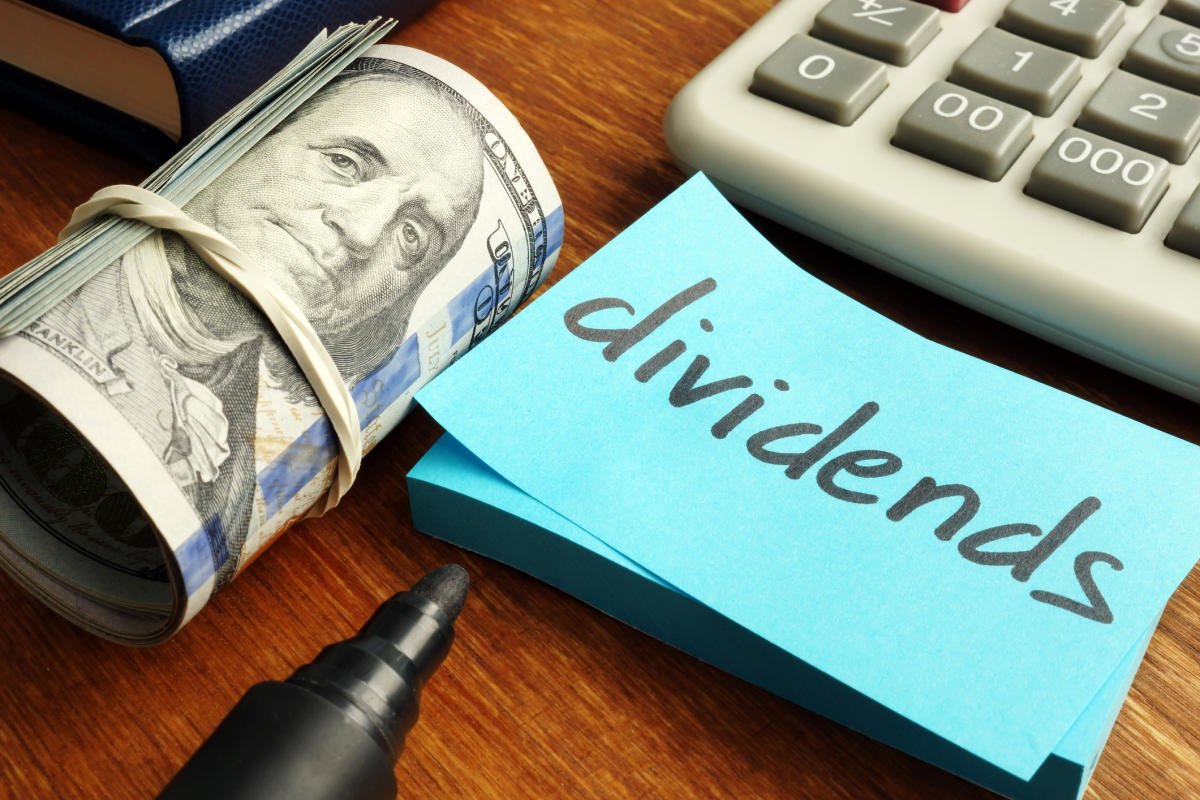Updated 2 min read
In This Article:
US stocks swung between positive and negative territory on Tuesday as investors fielded a rush of fresh earnings reports and waited for the Trump administration to ease up on tariffs for automakers.
The S&P 500 (^GSPC) rose 0.2% in mid-afternoon trade, while the tech-heavy Nasdaq Composite (^IXIC) flipped back into green territory, up by about 0.1%. The Dow Jones Industrial Average (^DJI) climbed 0.6%, or over 200 points, looking to extend its longest win streak of 2025.
The Trump administration will act on Tuesday to ease the impact of its auto tariffs by effectively making sure US carmakers already paying tariffs aren’t charged other levies such as on steel, officials said.
That has sparked optimism for a further dial-down in trade tensions, after President Trump’s upbeat tone on trade negotiations, particularly with China, helped stocks climb back from sharp intra-session losses on Monday.
But Treasury Secretary Scott Bessent again on Tuesday put the onus on China, saying the tit-for-tat tariffs between the countries were not sustainable — for China. He also would not confirm whether Trump had spoken with Chinese President Xi Jinping.
Meanwhile, Amazon (AMZN) came under fresh scrutiny from the White House after reports that it would show tariff price increases in product price tags. The White House called the move a “hostile and political act.” Shares fell, but recovered after Amazon denied the plans.
Read more: The latest on Trump’s tariffs
Earnings took the spotlight with a flood of releases Tuesday morning. General Motors (GM) delayed its earnings conference call until Thursday, leaving room to reflect any White House tariff moves. While GM posted a first quarter earnings beat, the biggest of the Big Three US automakers put its forward 2025 guidance on hold as it grapples with the tariff fallout.
Spotify (SPOT) and Coca-Cola (KO) were also among the closely watched companies reporting before the bell, with the focus on Trump’s tariffs and whether companies are exposed or sheltered from their impact. Starbucks (SBUX) will report results after the market closes.
Consumer confidence declined for the fifth straight month, with the Conference Board’s Consumer Confidence Index for April coming in at 86, short of expectations and a significant drop from March’s 92.9 reading.
Job openings also slid in March and are hovering near a more than four-year low as the labor market continued to show signs of cooling.
LIVE 21 updates
-
‘Trump put’ doesn’t extend to energy, say JPMorgan analysts
With oil down roughly 14% year-to-date, Wall Street analysts highlight the Trump administration is still prioritizing lower energy costs, even if traders see a trade war deescalation as positive for crude.
On Monday West Texas Intermediate (CL=F) fell more than 2% to hover above $60 per barrel. Brent (BZ=F), the international benchmark, also dropped to trade below $64 per barrel.
“While the recent de-escalation in trade talks has reduced the probability of a bear case, the ‘Trump put’ does not extend to energy,” wrote JPMorgan’s Natasha Kaneva and her team on Tuesday.
The analysts said during their meetings in DC last week, the administration emphasized a notable slowdown in energy inflation, a priority it still holds.
On the demand side, ” the markets may be underestimating the final tariff levels that the Trump administration plans to impose on US imports,” said Kaneva.
Oil has been on a downward trend since President Trump’s tariff policy was revealed earlier this year. Worries over cratering demand amid a global trade war, and planned supply hikes from the Organization of Petroleum Exporting Countries and its allies, OPEC+ have put pressure on the commodity.
-
Construction job openings decline by 38,000 in March
The construction sector is showing signs of a slowdown.
Data from the US Bureau of Labor Statistics shows that industry job openings fell by 38,000 last month and are down by 90,000 from the same period last year. The overall number of open jobs for the overall economy fell to 7.19 million at the end of March from 7.48 million in February.
“Construction job openings continued to trend lower in March, a clear sign of slowing industrywide demand for labor,” ABC chief economist Anirban Basu wrote in a statement. “Hiring activity was particularly weak for the month, with the 302,000 hires equivalent to just 3.6% of industrywide jobs — the lowest rate ever recorded.”
Tuesday’s data comes amid growing uncertainty about the US outlook. Developers have hesitated to move forward with new projects since President Trump’s tariff escalation.
Many construction materials, such as steel, aluminum, lumber, and copper, were exempted from reciprocal tariffs. But importers of steel and aluminum have been paying a 25% tariff on the metals since March 12, while Canadian softwood lumber importers pay a 14.5% tariff, according to the National Association of Home Builders.
That’s expected to put pressure on the industry. “Tariffs and other economic headwinds may blunt hiring expectations in the months to come,” Basu said,
-
Amazon denies tariff label plans
Yahoo Finance’s Myles Udland and Dan Howley report:
NasdaqGS – Nasdaq Real Time Price USD
As of 2:24:33 PM EDT. Market Open.
-
Trade deficit widens in March, suggesting a potential drag on Q1 GDP
The US trade deficit widened sharply in March ahead of President Trump’s “Liberation Day” tariff announcement, which could exaggerate a slowdown in first quarter US economic growth.
The goods trade gap increased 9.6% to $162 billion, driven by a surge in goods imports as businesses likely tried to ship products ahead of anticipated tariffs.
Goods imports soared $16.3 billion to $342.7 billion, while exports rose $2.2 billion to $180.8 billion, the Commerce Department’s Census Bureau said on Tuesday.
Imports are a subtraction in the calculation of GDP, meaning that the large number of imports could drag on the first quarter gross domestic product (GDP) reading. The Atlanta Fed’s most recent forecast estimates that GDP will have fallen 2.5% in Q1.
-
Royal Caribbean delivers big earnings shock
While much of corporate America pulls or cuts guidance this earnings season, Royal Caribbean Cruises (RCL) surprised investors by raising its profit forecast.
Royal Caribbean shares initially jumped 3% following the results but then reversed gains, falling 2.6% at last check. Cruise line peers Carnival Corp (CCL) and Norwegian Cruise Line Holdings Ltd. (NCLH) — which report tomorrow — were also trading lower this morning.
Travel stocks have had a rough year, but cruise lines might be a bright spot for investors. Royal Caribbean’s first quarter earnings report helped make that case.
The “WAVE season was the best in our company’s history, putting us in a strong book position for the remainder of the year and for 2026,” CEO Jason Liberty told investors and analysts on their earnings call this morning. (Wave season refers to when cruise lines offer the best deals for upcoming cruises.)
The cruise operator lifted its adjusted earnings per share forecast for the full year to a range of $14.55 to $15.55, beating analysts’ estimates of $14.78.
The upbeat outlook comes after air carriers like JetBlue (JBLU) and American Airlines (AAL) told investors they’re bracing for a year of macroeconomic uncertainty. American’s management yanked its full-year guidance amid persistent softness in domestic demand.
-
Atlanta Fed model sees 2.7% GDP decline in Q1
The advance reading of first quarter Gross Domestic Product (GDP) is due out for release on Wednesday morning.
Economists and other projection models project a weak reading of economic growth to start the year. The Atlanta Fed’s GDP Now tool, which updates after economic data releases that feed into quarterly GDP, is now projecting US economic growth declined by 2.7% in the first quarter.
Consensus expects the US economy grew at annualized rate of 0.3%, per Bloomberg data. This would mark a large drop-off from the 2.4% GDP seen in the fourth quarter.
-
Hims & Hers stock soars over 20% on Novo Nordisk GLP-1 partnership
Yahoo Finance’s Anjalee Khemlani reports:
-
Consumer confidence plunges again in April
Consumer confidence declined for a fifth consecutive month in April, falling to levels not seen since the onset of the COVID-19 pandemic as uncertainty related to Trump’s trade policy also lifted inflation expectations, according to new data released Tuesday morning.
The Conference Board’s Consumer Confidence Index for April came in at a reading of 86, a significant drop from March’s revised 92.9 reading and short of the 88 reading expected by economists.
The “Present Situation Index,” which measures consumers’ assessment of current business and labor market conditions, fell to 133.5 in April from 134.5 in March.
The “Expectations Index,” which tracks consumers’ short-term outlook for income, business, and labor market conditions, also fell to 54.4 in April from 65.2 last month. This was the lowest level since October 2011. Historically, a reading below 80 in that category signals a recession in the coming year.
Meanwhile, average 12-month inflation expectations reached 7% in April — the highest since November 2022, when the US was experiencing extremely high inflation.
-
Job openings fall more than expected in March, hover near four-year low
Job openings slid in March and are hovering near a more than four-year low as the labor market continued to show signs of cooling.
New data from the Bureau of Labor Statistics showed 7.19 million jobs open at the end of March, a decrease from the 7.48 million seen in February. Job openings in March hit their lowest level since September 2024 and were near levels not seen since December 2020. The data comes as investors closely watch for any signs that economic growth may be slowing further.
The February figure was revised lower from the 7.57 million open jobs initially reported. Economists surveyed by Bloomberg had expected Tuesday’s report to show 7.5 million openings in February.
The Job Openings and Labor Turnover Survey (JOLTS) also showed that 5.4 million hires were made during the month, up slightly from the 5.37 million made during February. The hiring rate held flat at 3.4%. Also in Tuesday’s report, the quits rate, a sign of confidence among workers, moved up slightly to 2.1%, down from 2%.
Both the hiring and quits rates are hovering near decade lows.
-
Amazon stock slips as White House calls new potential policy a ‘political act’
Amazon (AMZN) is reportedly set to display the cost of President Trump’s tariffs next to the final price on their website, according to Punchbowl News.
On Wednesday, White House press secretary Karoline Leavitt told reporters, “This is a hostile and political act by Amazon.”
Shares quickly fell more than 2% in premarket trading following Leavitt’s comments and were off by about 1% after the market open.
NasdaqGS – Nasdaq Real Time Price USD
As of 2:24:33 PM EDT. Market Open.
-
Home prices keep rising, but the pace cools in February
Home prices rose again in February as limited supply continued to prop up the market amid high mortgage rates and affordability challenges.
The S&P CoreLogic Case-Shiller National Home Price Index rose 0.3% over the prior month in February on a seasonally adjusted basis, easing from the 0.5% monthly gain recorded in January.
On an annual basis, prices nationally increased 3.9%, less than the 4.1% seen in January.
The index tracking home prices in the 20 largest US cities rose 0.4% in February from January, matching the monthly Bloomberg consensus estimate.
The 20-city index climbed 4.5% compared to last February, down from a 4.7% annual increase in the previous month.
“Even with mortgage rates remaining in the mid-6% range and affordability challenges lingering, home prices have shown notable resilience,” Nicholas Godec, head of fixed income at S&P Dow Jones Indices, wrote in a press release.
“Buyer demand has certainly cooled compared to the frenzied pace of prior years, but limited housing supply continues to underpin prices in most markets. Rather than broad declines, we are seeing a slower, more sustainable pace of price growth.”
Mortgage rates continue to hover around 6.8% as market volatility persists amid tariff-related news. The average 30-year fixed rate stood at 6.81% through last week, according to Freddie Mac, little changed from 6.83% a week earlier.
-
HSBC lowers S&P 500 target to 5,600 as market struggles with stagflation, recession fears
Another Wall Street strategist has lowered their outlook for the S&P 500 this year.
HSBC head of Americas equity strategy Nicole Inui cut her S&P 500 (^GSPC) year-end target to 5,600 from a prior forecast of 6,700. Inui recommended clients position “defensively” as the market narrative continues to swing between fears over higher inflation, slower growth, and possibly a recession.
“We expect the market narrative will flip-flop between recession and stagflation until tariff turmoil subsides, the Fed starts easing, and/or inflationary pressures fail to build up,” Inui wrote.
Inui is now the 12th strategist tracked by Yahoo Finance to cut an S&P 500 target amid President Trump’s tariff escalation.
“Upside risks include a quicker reversal in sentiment from lower policy uncertainty leading to better economic growth while taming inflation (energy prices down, no tariff pass through) leaves room for the Fed to cut,” Inui wrote. “On the downside, further tariff hikes with no de-escalation, a fast deterioration in job markets/consumer with the Fed slow to react, and overall continued uncertainty will further erode investor and business sentiment.”
-
UPS to cut 20,000 jobs on likely lower Amazon shipments, profit beats estimates
United Parcel Service (UPS) stock rose slightly in premarket trading on Tuesday after the company reported first quarter profit that beat expectations and said it would continue cost-cutting efforts — including by slashing 20,000 jobs.
UPS said it would save $3.5 billion in 2025 from job cuts and by shutting 73 leased and owned buildings by the end of June, per Reuters.
The moves are aimed at reconfiguring UPS’s shipping network as it expects order volumes for its biggest customer, Amazon (AMZN), as well as China-linked e-commerce players Shein and Temu, to slow amid President Trump’s tariff plans.
UPS’s first quarter revenue fell marginally to $21.5 billion, and it reported adjusted profit per share of $1.49 compared with expectations of $1.38. UPS said it was not providing any updates to its full-year outlook for revenue of $89 billion and an operating margin of about 10.8%.
-
A tale of 2 consumers: High earners doing fine while lower-income households ‘under some pressure’
-
3 explanations from Trump for his historically bad 100-day stock market
Yahoo Finance’s Ben Werschkul reports:
SNP – Free Realtime Quote USD
As of 2:24:34 PM EDT. Market Open.
Read here for a closer look at the three ways Trump world has explained the stock market’s rocky ride.
-
Coca-Cola stock pops on earnings surprise as the company calls Trump tariffs ‘manageable’
Coca-Cola (KO) stock climbed over 1% on Tuesday morning after the beverage giant reported a surprise earnings beat. Coca-Cola also didn’t issue a warning with its guidance and said in a statement that the impacts of tariffs would be “manageable” this year.
Yahoo Finance’s Brian Sozzi reports:
-
Pfizer beats on Q1 profit, but revenue falls narrowly short
Pfizer’s (PFE) stock stalled in Tuesday’s premarket after the drugmaker’s results failed to enthuse investors.
Yahoo Finance’s Anjalee Khemlani reports:
-
GM beats on Q1 results, pulls guidance amid tariff deal promise
General Motors (GM) reported first quarter earnings on Tuesday morning that slightly topped Wall Street’s expectations.
But the American car-making giant put its forward guidane on hold after the White House said changes to auto tariffs are coming later on Tuesday. Carmakers already paying a 25% tariff on imports of vehicles and parts are expected to be spared other duties on steel and aluminium as part of those moves.
GM shares dropped over 2% in early premarket trading.
Yahoo Finance’s Pras Subramanian reports:
-
Spotify shares fall 8% after disappointing guidance
Yahoo Finance’s Alexandra Canal reports:
Spotify (SPOT) reported mixed first-quarter earnings and disappointing guidance on Tuesday, sending shares down over 8% in early premarket trading.
The company guided to second quarter monthly active users (MAUs) of 689 million, below the roughly 694 million analysts polled by Bloomberg had expected. Q2 guidance for operating income and gross margins also fell short of expectations.
For the first quarter, MAUs rose 10% year over year to 678 million, a slight miss compared to the 679 million estimate. Premium subscribers rose 12% over the prior year to 268 million, the second-highest Q1 subscriber net addition in the company’s history.
“The underlying data at the moment is very healthy: engagement remains high, retention is strong, and thanks to our freemium model, people have the flexibility to stay with us even when things feel more uncertain,” Spotify CEO Daniel Ek said in the earnings release.
“So yes, the short term may bring some noise, but we remain confident in the long-term story, and the direction we’re heading in feels clearer than ever.”
-
Gold slides after White House offers auto tariff relief
Hopes for a reprieve in President Trump’s trade war are dragging gold (GC=F) prices lower early on Tuesday as the rush to shelter eases.
Gold futures fell almost 0.7% after Commerce Secretary Howard Lutnick confirmed that some imported autos will be spared separate tariffs on steel and aluminum, if they already pay other duties. Some levies on foreign parts used in US assembly of cars and trucks will also be reduced.
“Although negotiations may progress slowly, the White House’s renewed willingness to engage has shifted market sentiment from panic selling to cautious optimism, putting some downward pressure on gold,” Pepperstone Group research strategist Dilin Wu said in a note, per Bloomberg.














